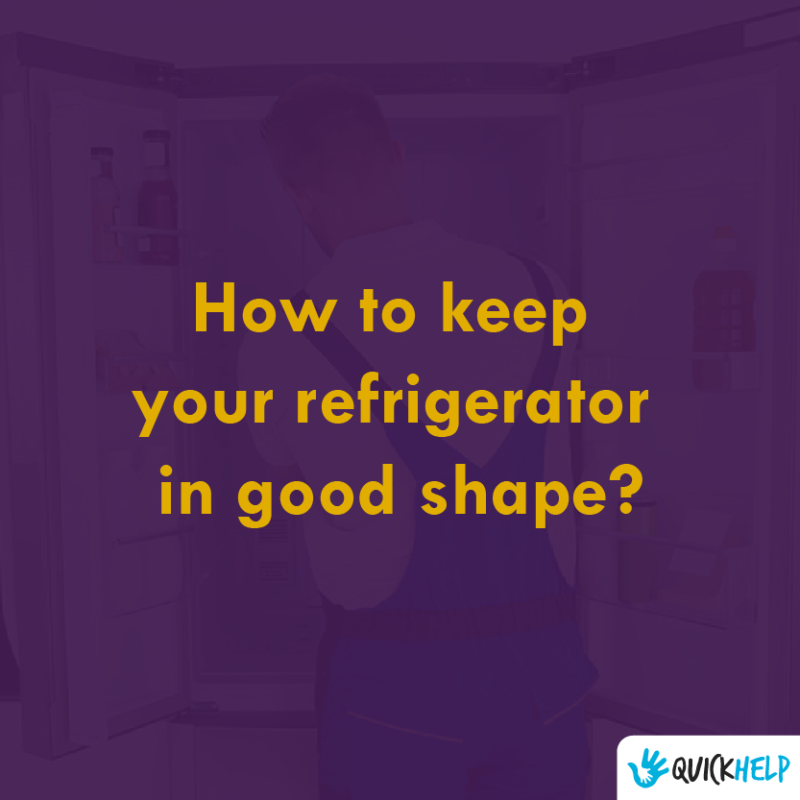If only the refrigerator could speak, it would tell you how full it is with all those stocks. Given the current situation, refrigerator service providers are also out of reach, that means you can’t afford any breakdowns.
Below are our suggested tips to ensure that your refrigerator is in good shape until we get the service done for you.
First and foremost, ensure that the refrigerator is set at or below 4 degree Celsius and that the Freezer is set at -18 degree Celsius, as most bacteria can’t survive at these temperatures. Simply avoid the TDZ or Temperature Danger Zone which is from 5-60 degree Celsius.
Stocking up the Chiller
- Stock separate meat items in separate transparent boxes to avoid cross contamination which could have taken place while the meat was outside.
- For items where expiry dates are applicable, use the LIFO (Last-In-First-Out) method to ensure that meat items don’t get stale inside the chiller for too long. LIFO ensures that the last item you place inside the chiller comes out for preparation before anything else, whereby eliminating the need to throw away food items because they are past the best before date.
Simplicity
- Refrigerate items that only require refrigeration. For example most consumer grade Milk packets can be stored in normal room temperature UNTIL it is cut open. Thus, there is no need to refrigerate 5 factory-sealed milk cartons.
- Use the separate compartments for different kinds of food.
- Use the egg tray for eggs and save up space without stuffing the container that it usually comes in straight into the fridge.
- Use the chiller box which is mostly the lower-most compartment in domestic refrigerators to store the vegetables.
- Fruits like Papaya, Pineapple, Watermelon, can be cut up into pieces and stored in lidded containers that ensure the fruit’s quality is maintained, in order to save space without stuffing the entire fruit inside the fridge.
Keeping it clean until serviced
- Clean the Refrigerator tray using soapy water to avoid any odor developments
- Clean the exterior using a wet cloth after disconnecting the power.
DIY Tips for Common Refrigerator Problems (BONUS!!)
Now, you’ve tried following all the steps above, but your refrigerator just gave up. It doesn’t perform it’s basic “cooling function” anymore! The butter is turning soft, the milk is turning sour, and what’s worse? It’s almost impossible to get hold of a reliable technician! So what can you do?
We’ve put together 4 common problems that leads to this along with DIY guides on solving them. Please follow them at your own and risk and take all necessary precautions mentioned in the guide. If you are able to hold on till a technician becomes available, we recommend to do so.
- Door gasket. The refrigerator door gasket forms an airtight seal between the refrigerator cabinet and the door. If the door gasket is cracked or worn, cold air will escape the refrigerator and the temperature can rise to a level unsafe for food storage. Replacing the gasket is easy. Follow the DIY guide on how to replace a door gasket.
- Condenser coil. The condenser in your refrigerator is a heat exchanger that allows heat to be released from the refrigerant flowing inside the condenser coils. When dust accumulates on the coils, the condenser can’t transfer the heat from the refrigerant as easily as it should, and the refrigerator won’t cool effectively. If your refrigerator isn’t cooling well, check the condenser coils to see if they need cleaning. Here’s a guide that tells you how to do it.
- Thermistor. A thermistor is a temperature sensor located in the refrigerator. It lets the main control board know what the temperature is. If the thermistor stops working, temperatures in the refrigerator won’t be correct. Here’s a guide that tells you how to do it.
- Temperature control thermostat. The temperature control thermostat senses the refrigerator temperature, and turns the compressor on and off to regulate the temperature. If it stops sensing the temperature or no longer regulates the compressor, you can replace it by following the instructions in this DIY repair guide.
By following the above, any possible breakdowns can be avoided until QuickHelp locates you with the nearest fridge service provider after this pandemic settles down.
Until such time, stay home, stay safe.


